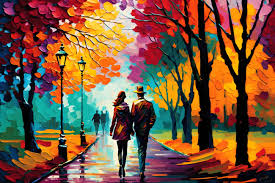Painting, as an art form, has captured the imagination of humanity for centuries. From the intricate cave paintings of our ancient ancestors to the vibrant canvases of contemporary artists, the act of applying pigment to a surface to create visual art remains a fundamental expression of human creativity. In this article, we embark on a journey through the world of abstracte kunst exploring its history, techniques, and enduring significance.
A Brief History: The history of painting is as diverse as it is rich. Dating back tens of thousands of years, prehistoric humans left their mark on cave walls, depicting scenes of daily life, rituals, and the natural world with remarkable skill and sophistication. These early examples of painting not only serve as a window into the past but also attest to the innate human desire to communicate and express oneself through art.
As civilizations flourished and cultures intermingled, painting evolved, taking on myriad forms and styles. From the classical masterpieces of the Renaissance, with their emphasis on realism and perspective, to the bold abstractions of the modern era, painting has continuously pushed the boundaries of artistic expression.
Techniques and Mediums: One of the most captivating aspects of painting is the sheer variety of techniques and mediums artists employ to bring their visions to life. Oil painting, with its rich colors and expressive textures, has long been favored by artists for its versatility and luminosity. Watercolor, on the other hand, is prized for its transparency and fluidity, allowing for delicate washes of color and ethereal effects.
Acrylic paint, with its fast-drying properties and bold pigments, has gained popularity in recent decades, offering artists a contemporary alternative to traditional mediums. Mixed media techniques, which incorporate a combination of materials such as collage, found objects, and digital elements, have further expanded the possibilities of painting, blurring the lines between disciplines and challenging conventional notions of art.
